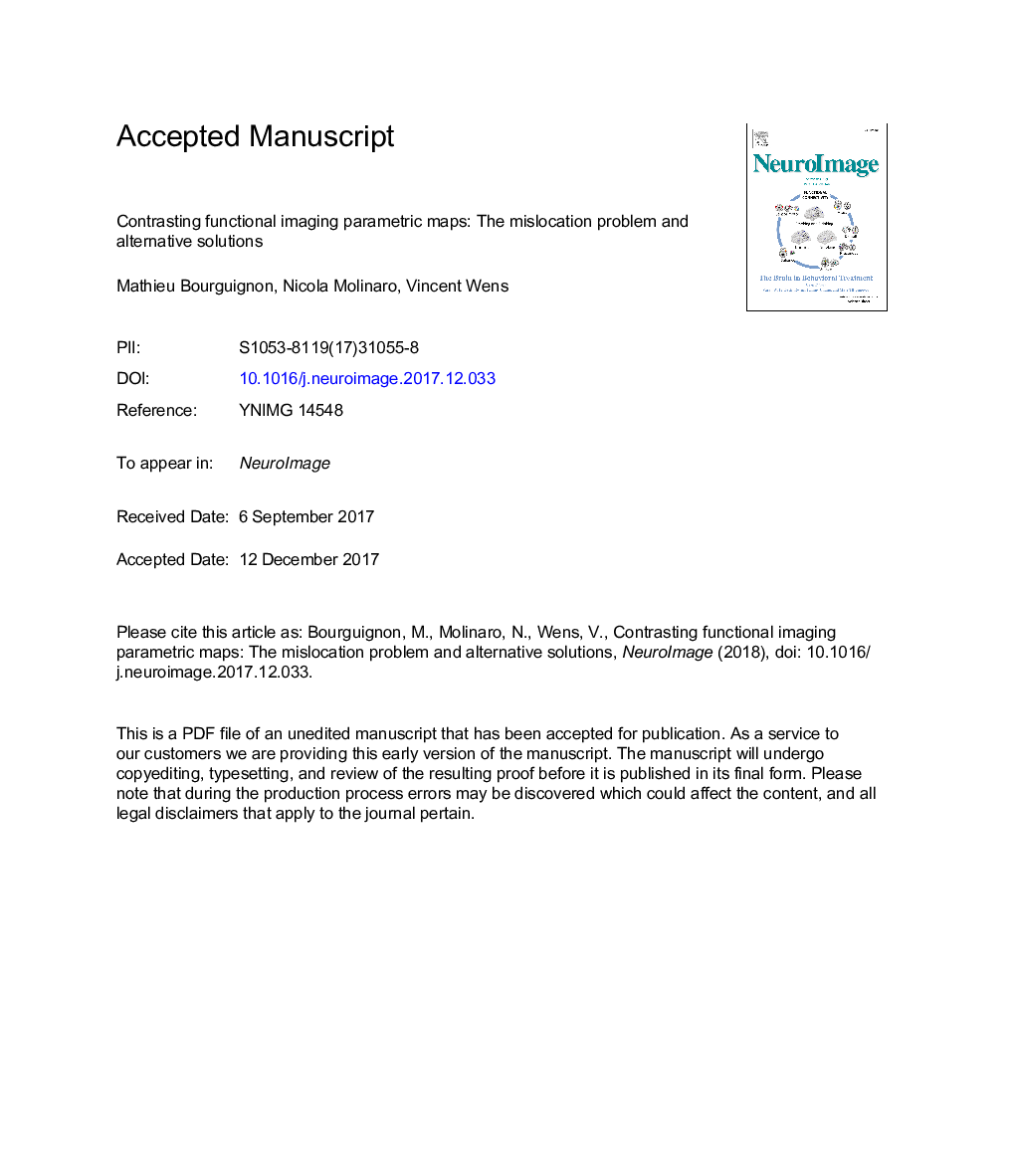| Article ID | Journal | Published Year | Pages | File Type |
|---|---|---|---|---|
| 8687177 | NeuroImage | 2018 | 54 Pages |
Abstract
In the field of neuroimaging, researchers often resort to contrasting parametric maps to identify differences between conditions or populations. Unfortunately, contrast patterns mix effects related to amplitude and location differences and tend to peak away from sources of genuine brain activity to an extent that scales with the smoothness of the maps. Here, we illustrate this mislocation problem on source maps reconstructed from magnetoencephalographic recordings and propose a novel, dedicated location-comparison method. In realistic simulations, contrast mislocation was on average â¼10â¯mm when genuine sources were placed at the same location, and was still above 5â¯mm when sources were 20â¯mm apart. The dedicated location-comparison method achieved a sensitivity of â¼90% when inter-source distance was 12â¯mm. Its benefit is also illustrated on real brain-speech entrainment data. In conclusion, contrasts of parametric maps provide precarious information for source location. To specifically address the question of location difference, one should turn to dedicated methods as the one proposed here.
Related Topics
Life Sciences
Neuroscience
Cognitive Neuroscience
Authors
Mathieu Bourguignon, Nicola Molinaro, Vincent Wens,
